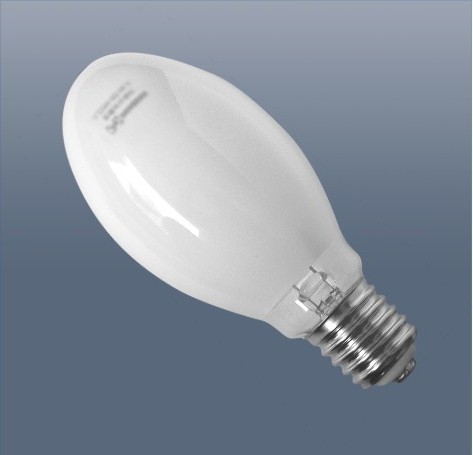Despite the emergence of alternative light sources, the DRL lamp is still one of the most sought-after solutions used to illuminate industrial premises and streets. This is not surprising, given the advantages of this lighting device:
- long service life, especially during continuous operation (inherent in all gas discharge lamps) ;
- high efficiency and significant luminous flux;
- sufficient reliability of all nodes.
It was believed that with the advent of sodium alternatives, the DRL lamp will lose its position, but this did not happen. If only because its white spectrum of light is more natural for the human eye than the orange tint of the luminous flux of sodium solutions.
What is a DRL lamp?
The abbreviation "DRL" is decrypted very simply - an arc mercury lamp. The explanatory terms “luminescent” and “high pressure” are sometimes added. All of them reflect one of the features of this solution. In principle, saying “DRL”, one can not particularly worry that a mistake may be made in the interpretation. This abbreviation has long become a household name, in fact, a second name. By the way, sometimes you can see the expression "DRL lamp 250". Here, the number 250 means consumed electrical power. Quite convenient, since you can choose a model for
existing launcher equipment.
The principle of operation and device
The DRL lamp is not something fundamentally new. The principle of generating invisible eye ultraviolet radiation in a gaseous medium during electrical breakdown has been known for a long time and has been successfully used in fluorescent tube flasks (we recall the “housekeepers” in our apartments). Inside the lamp in an inert gas atmosphere with the addition of mercury is a quartz glass tube that can withstand high temperatures. When voltage is applied, an arc first arises between two closely spaced electrodes (working and ignition). In this case, the ionization process begins, the gap conductivity increases, and when a certain value is reached, the arc switches to the main electrode located on the opposite side of the quartz tube. The ignition contact thus leaves the process, as it is connected through a resistance, and, therefore, the current on it is limited.

The main arc radiation is in the ultraviolet range, which is converted into visible light by a phosphor layer deposited on the inner surface of the bulb.
Thus, the difference from the classic fluorescent lamp in a special way of igniting the arc. The fact is that an initial gas breakdown is required to start ionization. Previously, pulsed electronic devices capable of creating a sufficiently high voltage to breakdown the entire gap in a quartz tube did not have sufficient reliability, so the developers in the 1970s made a compromise - they placed additional electrodes in the structure, the ignition between which occurred at a mains voltage. Anticipating the counter-question of why the discharge in lamp tubes is, nevertheless, created using a choke coil, we will answer - it is all about power. The consumption of tubular solutions does not exceed 80 watts, and DRL is not less than 125 watts (reaching 400). The difference is palpable.
The DRL lamp connection diagram is very similar to the solution used to ignite tubular fluorescent lighting fixtures. It includes a series-connected inductor (limitation of electric current), a parallel-connected capacitor (eliminating interference in the network) and a fuse.